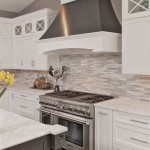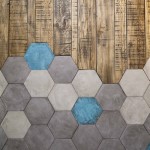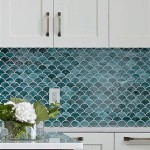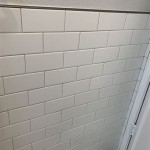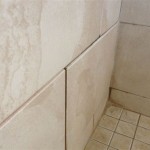Can You Tile Onto Breeze Block Walls in Revit Families? A Comprehensive Guide
The question of whether tiling can be accurately and effectively represented on breeze block walls within Revit families is a crucial one for architects, engineers, and construction professionals. Revit, as a powerful Building Information Modeling (BIM) software, allows for detailed modeling and documentation of building components. However, effectively representing the intricacies of tiling on a textured surface like breeze block requires a nuanced understanding of Revit's capabilities and limitations.
This article will explore the possibilities and challenges associated with modeling tile finishes on breeze block walls in Revit families. It will delve into various techniques, from simple surface patterns to more complex parametric approaches, examining the advantages and disadvantages of each. The goal is to provide a comprehensive guide to help users make informed decisions about how to best represent this specific construction detail within their Revit models, ensuring both visual accuracy and data integrity.
Understanding Breeze Block and Its Representation in Revit
Breeze blocks, also known as concrete blocks or cinder blocks, are a common building material characterized by their textured surface and modular dimensions. Accurately replicating this texture and modularity in a Revit model is the first step towards successfully applying a tile finish. Simply representing the wall as a flat surface will not suffice, as it fails to capture the inherent aesthetic and structural characteristics of breeze block construction.
There are several ways to model breeze block within Revit. A simple approach involves using a generic model family, which can be extruded to the desired dimensions and material properties. More sophisticated methods involve creating a stacked wall system composed of individual block families, allowing for greater control over joint patterns and individual block variations. The choice of method depends on the level of detail required for the project and the overall modeling strategy.
Once the base breeze block wall is modeled, the next consideration is the application of materials. Revit offers a robust material library, allowing users to define the visual appearance, thermal properties, and other physical characteristics of building materials. The base material for the breeze block should accurately reflect its color, texture, and reflectivity, providing a realistic foundation for the subsequent application of tiling.
Techniques for Modeling Tile on Breeze Block Walls
The challenge of modeling tile on breeze block lies in the inherent complexity of both materials. Breeze block has a textured, irregular surface, while tile is typically a smooth, modular element. Combining these two materials in a Revit model requires careful consideration of how to represent the interface between them, ensuring that the visual representation accurately reflects the actual construction detail.
One common approach involves using surface patterns. Revit allows users to apply surface patterns to the faces of elements, which can be used to simulate the appearance of tile. This method is relatively simple and efficient, but it has limitations. Surface patterns are primarily visual and do not affect the geometry of the model. This means that they will not accurately represent the thickness of the tile or its interaction with the underlying breeze block.
A more accurate approach involves using a split face tool. This tool allows users to divide the face of an element into multiple regions, each of which can be assigned a different material. By splitting the face of the breeze block wall into individual tile-sized regions, users can apply a tile material to these regions, creating a more realistic representation of the tile finish. This method provides better control over the placement and appearance of individual tiles, but it can be time-consuming, especially for large areas.
For complex or highly detailed tiling patterns, a parametric approach may be necessary. This involves creating a custom Revit family that represents a single tile or a small group of tiles. These tile families can then be arrayed across the surface of the breeze block wall, creating a fully parametric tile finish. This method offers the greatest level of control and accuracy, but it also requires a significant investment of time and effort in family creation.
Furthermore, the use of decals can assist in visualizing tile patterns. Decals are images that can be placed on the surface of elements in Revit, and can be useful for representing intricate tile motifs or complex patterns. However, similar to surface patterns, decals have limitations as they don't affect geometry. They are best used for visualization purposes rather than for accurate representation of the physical properties of the tile.
Considerations for Performance and Accuracy
When modeling tile on breeze block walls in Revit, it's crucial to balance the need for visual accuracy with the impact on model performance. Highly detailed models can become slow and unresponsive, especially when dealing with large projects. Therefore, it's important to choose a modeling technique that provides the necessary level of detail without unnecessarily burdening the system.
The use of surface patterns is generally the most efficient option, as it adds minimal overhead to the model. However, it's important to be aware of its limitations and to supplement it with other techniques if necessary. For example, surface patterns can be used to represent the overall tile pattern, while the split face tool can be used to add detail around edges and corners. This approach can strike a balance between visual accuracy and performance.
When using parametric families, it's important to optimize the family geometry and minimize the number of instances. Avoid unnecessary detail and use simplified representations where possible. For example, instead of modeling each individual grout line, consider using a slightly darker material for the tile edges. This can create the illusion of grout lines without adding extra geometry to the model.
Another performance factor is the size of the Revit project file. Larger, more complex models consume more memory and processing power. To mitigate this, regular audits of the BIM model are recommended to identify and remove any unused or obsolete items. This practice helps to keep the file size manageable and the model running efficiently.
Furthermore, consider using worksets effectively. By dividing the model into smaller, manageable worksets, different team members can work on different parts of the project simultaneously without compromising performance. This collaborative approach not only improves efficiency but also minimizes the risk of data corruption or loss.
Materials and Rendering
The visual quality of the tile finish depends heavily on the accuracy of the material definitions. Revit materials allow users to specify a wide range of properties, including color, texture, reflectivity, and transparency. By carefully adjusting these properties, users can create realistic representations of different types of tile, from ceramic to porcelain to stone.
It's important to use high-quality texture maps for the tile material. These maps provide the visual detail that is essential for creating a realistic appearance. Experiment with different texture maps to find one that accurately represents the color, texture, and reflectivity of the tile. Consider using bump maps to create the illusion of depth and texture, especially for textured tiles.
Rendering is another crucial aspect of visualizing the tile finish. Revit offers a built-in rendering engine, as well as the ability to export models to third-party rendering software. Experiment with different rendering settings to achieve the desired level of realism. Pay attention to lighting, shadows, and reflections, as these factors can significantly impact the visual quality of the tile finish.
Adjusting lighting is essential in rendering. Natural or artificial lighting can enhance the characteristics of the tiling, influencing the look and feel of the model. Shadow settings, in particular, can accentuate the textures of the breeze block and the tile, adding depth and realism to the visual representation. Similarly, reflections can add a degree of realism by mirroring the environment onto the tile surface.
Furthermore, explore the use of environmental settings in Revit or your chosen rendering software. The background, atmosphere, and surrounding elements contribute to the overall visual perception of the tile and breeze block. Consider implementing realistic environments that complement the architectural style and purpose of the building.

Stacked Wall All Strata Quantities Autodesk Community Revit S

Concrete Wall Finish In Revit Tutorial

More Basics With Revit Walls Profiling Your Foundation Synergis

Solved Maltese Hollow Concrete Blocks Into Revit Family Autodesk Community

Revit Architecture Pattern Concrete Block In

Special Design Of Breeze Blocks Hexagon 17 Đường Số 40 Bình An Quận 2 Thành Phố Hồ Chí Minh Vietnam Viet Tiles Corporation

Solved Maltese Hollow Concrete Blocks Into Revit Family Autodesk Community

Solved Maltese Hollow Concrete Blocks Into Revit Family Autodesk Community

Revit Family For Building Construction Manufacturer

Solved Maltese Hollow Concrete Blocks Into Revit Family Autodesk Community
Related Posts

